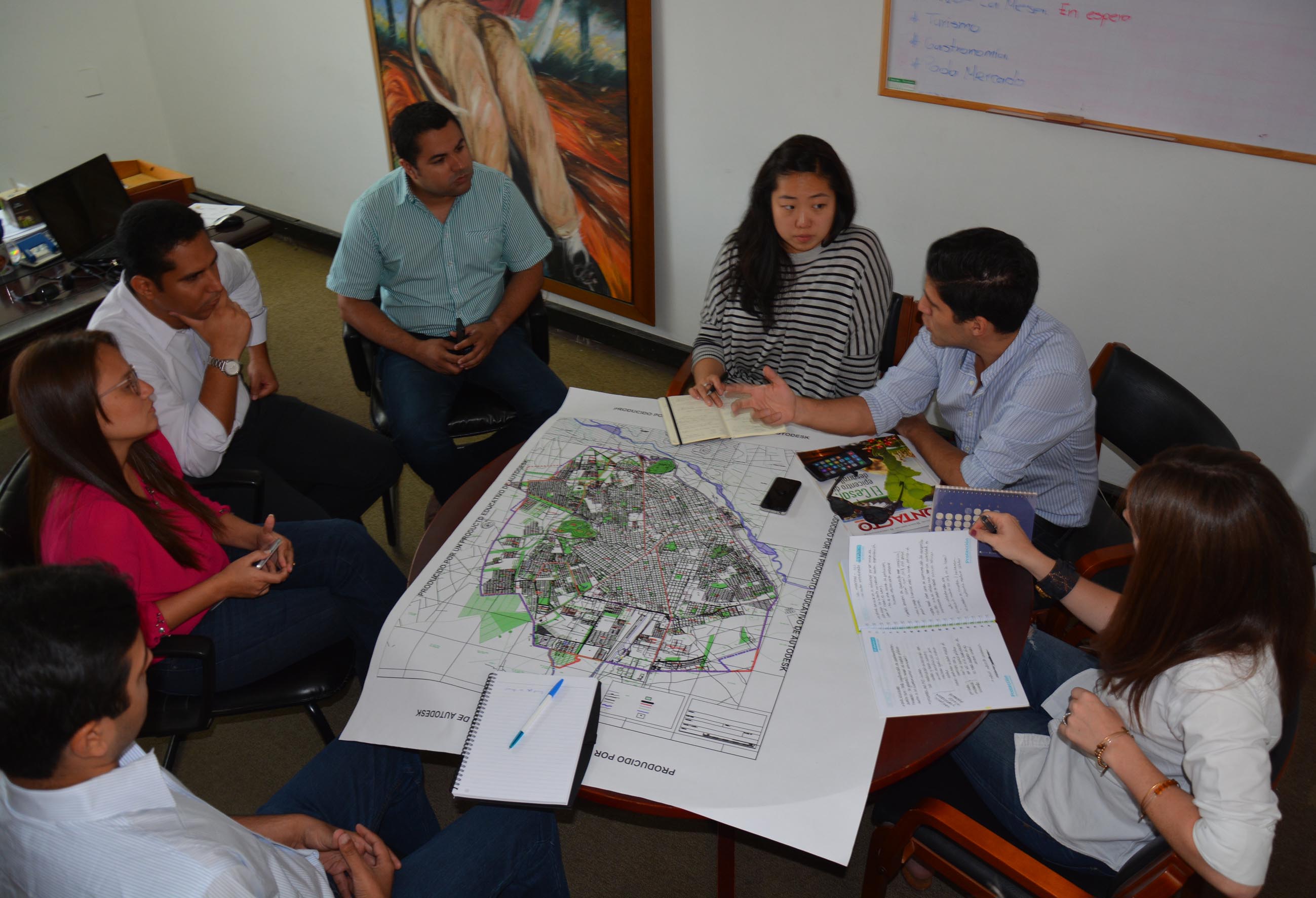Stern Stories
Expand Possible
—
As part of a Stern Signature Project, a team of NYU Stern and NYU Wagner students is partnering with the Urbanization Project to create a model for public space planning in Valledupar, Colombia.

“The Colombian city of Valledupar is predicted to double its population and to grow from 2,800 hectares to 8,000 hectares over the next 30 years, and when a city grows so rapidly without any plans, it can easily end up without any public spaces. These spaces need to be planned in advance,” says NYU Stern Urbanization Project Research Scholar Nicolás Galarza. As part of a Stern Signature Project (SSP), Galarza has been advising a team of NYU Stern MBA and NYU Wagner students who are developing a framework for building and maintaining public spaces in Valledupar. The framework is designed to be replicable in other cities, and the project will also contribute to the Urbanization Project’s broader work with Valledupar to strategically plan for the city’s expansion (watch this video outlining the full project).
In January, the students travelled with Galarza to Valledupar to meet with key stakeholders, including Mayor Fredys Socarras, developers and architects working in the planned expansion area, and a philanthropist who has donated a large piece of land for public use. “Our key goal was to get to know the city and go past secondary research into real application,” says NYU Wagner student Amalia Toro Restrepo. “So little data exists for what we are trying to solve. A lot of on-the-ground research was needed.”
“We started laying the groundwork for this trip last semester,” describes MBA student Abhimanyu Sanghi. “We looked at case studies of similar cities that have set aside and maintained public space successfully, which gave us insights on the direction in which we wanted the project to go. In doing further research on Valledupar itself, we identified several factors that were important to address. One of them was that administration of the city’s public spaces was split into three different offices, which made it really complicated to effectively manage the public spaces. Based on our preliminary research, we arrived in Valledupar with three initial recommendations: 1) Institute a commissioner of public spaces to oversee the development and maintenance of the spaces; 2) Cultivate an engaged citizen body to advocate for public spaces; and 3) Develop sustainable access to funding.”
“Our recommendations were preliminary,” says fellow MBA student Julie Lee, “because we could not fully understand the environment until we were on the ground. We learned things we could not find out through secondary research and phone conversations with the mayor’s administration. For example, we were able to experience and see first-hand the public space challenges the city currently faces. As developers build out neighborhoods, they are required to set aside a certain amount of land for public spaces. They are also responsible for developing and maintaining these public spaces, but because there is no real oversight or accountability due to limited resources, the public spaces are often neglected. It became clear to us that our proposal can only be successful if it addresses not only the expansion area but also the existing public spaces. There is an opportunity here to make a difference to the lives of both current and future citizens of Valledupar.”
“Being on the ground also helped us build relationships and establish trust and credibility with the different stakeholders as we shared our findings from the case studies,” adds Abhimanyu. “The mayor showed his confidence in our work by immediately announcing plans to implement our recommendation for instituting a commissioner of public spaces.”
The students will continue their work during the spring 2015 semester and will present their final deliverables in May. “In addition to helping write a decree for instituting the new commissioner of public spaces, we are developing a business plan for the citizen-led organization that will also include potential sources for sustainable funding of public spaces,” says Julie. “Our goal is to provide the city of Valledupar with a framework for the acquisition, development, and management of their public spaces – providing the city with a menu of options that also gives them enough flexibility to innovate and implement new ideas.”
“This project is particularly significant in that it bridges the gap between classroom education and what we can experience beyond the classroom walls,” says Amalia. “The Urbanization Project is really cutting-edge with both the work it’s doing on a practical level and in its contribution to academic research, and it’s really exciting to be a part of that. This project gave us the opportunity to create a model which will have a lasting impact, in Valledupar and beyond.”
In the top photo, from left to right: Abhimanyu Sanghi; Maria del Mar Chamorro, chief legal advisor; Jorge Maestre, chief architect; Raúl Villegas, planning secretary; Julie Lee; Nicolás Galarza; Amalia Toro
